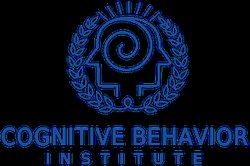What is PTSD?
Posttraumatic Stress Disorder (PTSD) is a mental health condition that can develop after exposure to a traumatic event. Symptoms can manifest immediately following the event, or weeks, months, or years later. It is normal to experience some sort of stress-related symptoms after a trauma. Common reactions include a range of emotional, physical, and behavioral symptoms, and are part of the body’s natural healing and recovering process. However, if these symptoms do not dissipate after several weeks and begin to interfere with daily functioning and well-being, an individual may be experiencing PTSD. See below for common symptoms of PTSD, outlined within four different symptom clusters (as described in the DSM-V).
Common Symptoms of PTSD
| Re-Experiencing the Event | Avoidance |
|
|
| Changes in Beliefs and Feelings | Feeling Keyed Up |
|
|
What is Secondary Traumatic Stress?
Also commonly referred to as vicarious trauma, secondary traumatic stress refers to the emotional and psychological effects experienced through indirect exposure to trauma, often times via a firsthand account of a traumatic event. The bearing witness to a firsthand account of trauma and an individual’s subsequent experience of stress may result in a set of symptoms that are similar to those seen in PTSD (for example, re-experiencing symptoms, hyperarousal, and avoidance). Although there may be an overlap in symptoms with PTSD, what differentiates secondary traumatic stress is that the individual did not have direct exposure to a traumatic event.
Treatment for PTSD
Typical treatment for PTSD includes psychotherapy and sometimes medication. Often times the two are used in conjunction with one another. Several evidence-based treatments for PTSD include aspects of cognitive behavioral therapy (CBT). Most treatments for PTSD are structured and time-limited. The following is a list of efficacious treatments for PTSD:
- Cognitive Processing Therapy (CPT)
- CPT teaches individuals to identify and modify unhelpful trauma-related thoughts and beliefs
- Prolonged Exposure (PE)
- PE teaches individuals to gradually approach trauma-related memories, feelings, and situations that they have avoided
- Stress Inoculation Training (SIT)
- SIT teaches individuals coping skills to effectively manage their anxiety
- Eye Movement Desensitization and Reprocessing Therapy (EMDR)
- EMDR involves thinking about distressing images and feelings related to your trauma, while engaging with rapid eye movements

